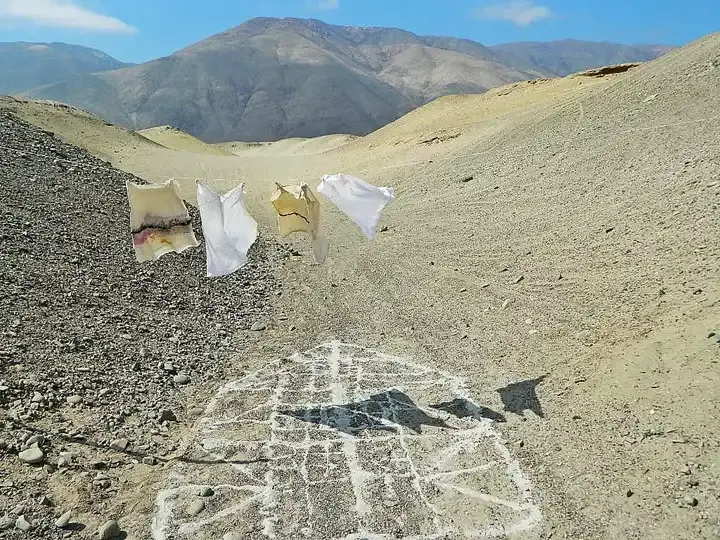Create Your First Project
Start adding your projects to your portfolio. Click on "Manage Projects" to get started
INVISIBLE
Project type
Site Specific Installation
Date
2020
Location
Heritage Site, Sloman Dam. Antofagasta Region, Chile
In South America, 186 kilometers north of Antofagasta, in the northern desert of Chile, lies the Sloman Reservoir, a national industrial heritage site. This is one of the many symbols of the country's saltpeter epic that took place at the end of the 19th century and the early 20th century. It was a hydroelectric dam built in 1905 by Henry B. Sloman (German) to provide electricity to the Buena Esperanza, Rica Aventura, Prosperidad, Grutas, and Empresa saltpeter works, all of which he owned. Today, this industrial heritage site is in a state of disrepair, a target of looting and graffiti.
The Sloman Reservoir is a daring and challenging project: it created a small artificial lake in the world's driest desert, creating a contrast with the hills and the dammed river, reflecting the sky at a small point in the brackish basin of the Loa River, the longest in Chile. A group of visual artists from the Antofagasta region carried out aesthetic explorations from 2015 to 2019. They thus arrived at a creative proposal that sought to reveal those other aspects that research and motivation had provided as ingredients for an experiment as uncertain as it was stimulating. It was always clear that it would be a multi-member project. They convened a heterogeneous group of artists. Seven artists chose to spend several months analyzing and unraveling the intricate information presented by the Sloman industrial landmark. They were not alone on this journey, as the piles of data were enormous and individual assessments fell short of providing the most suitable methodological and contextual clarity. Here, a group curatorship was proposed, respecting spatial, material, and immaterial elements, with observational actions that minimize impact and that will transcend in the final work exhibited and shared.
I was one of the artists who participated in this project, with my installation "Invisibles."
On the margins of the territory, taking shape through the despunta (sapearance), is the female presence in Sloman and in the saltpeter mines in general, whose memory is absent or fragmented. Within these margins, simulating the hidden or private space, is the woman. In the pampas, women, in addition to performing household and child-rearing tasks, are midwives, bartenders, weave sashes and leggings for the calichera (mineralization) mine, mend workers' trousers, and prepare paper and brass wreaths for pampas burials. They accompany their husbands to the calichera mine and carry out the material with their hands, just as there were those who sold their most definitive feminine identity through the material flow of milk, as wet nurses. However, there are no records of them, not even accounting records, since they were not paid for all these tasks. Within capitalist logic, the lack of a flow of money leads to the nonexistence of that which could not be transacted. The women at the Sloman Dam, as in much of world history, are invisible. And this is the input for my installation: Three elements constitute the materials of the work: the German element represented in the layout of the Fachwerkhauser (typical German house) outlined on the ground with saltpeter. The feminine element, caliche sackcloth in the shape of dresses embroidered with Sloman's topography, hangs like souls; and the territory: the Atacama Desert.








